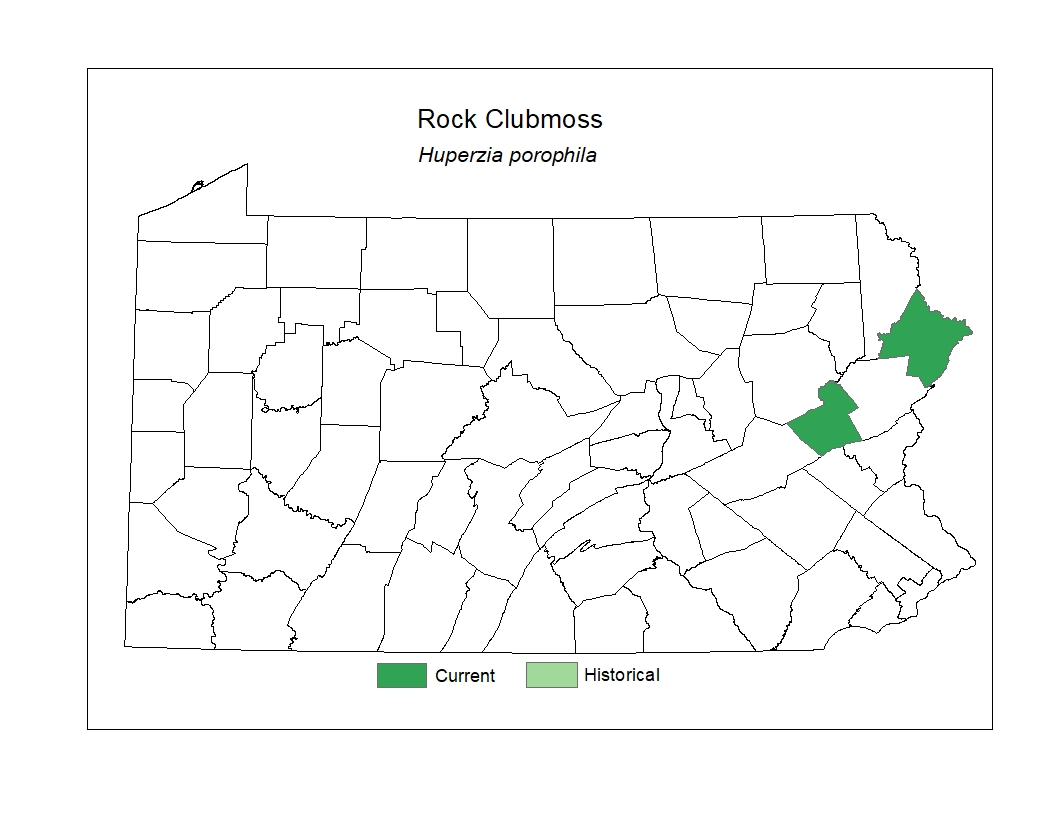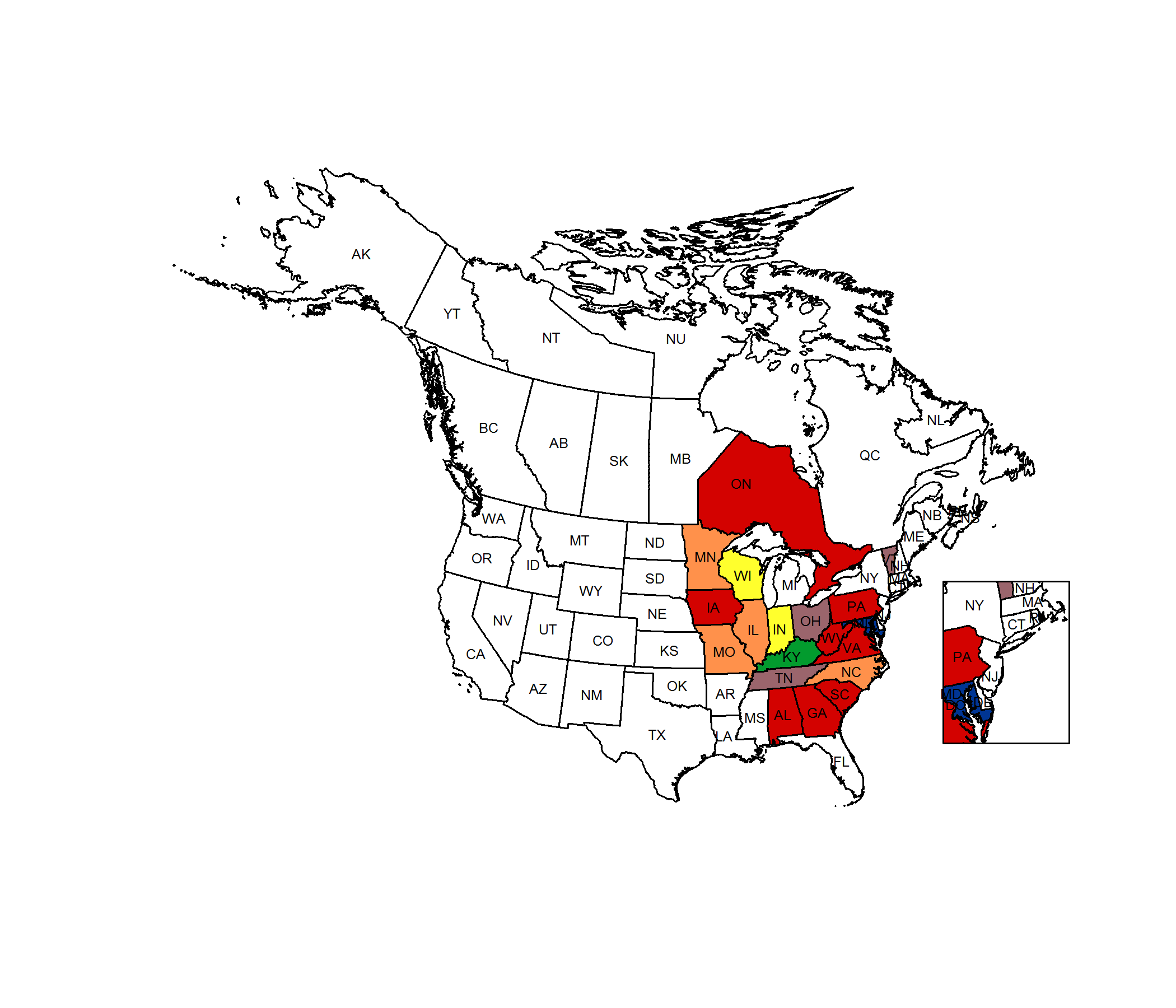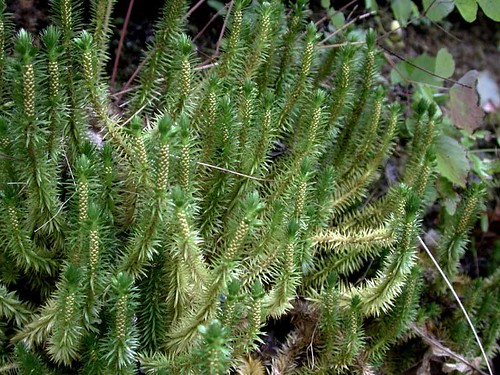 Species Factsheets
Species Factsheets
Huperzia porophila
Rock Clubmoss
State Status: Pennsylvania Endangered (PE)
PBS Status: Pennsylvania Endangered (PE)
Federal Status:
Global Rank: G4
![]() rank interpretation
rank interpretation
State Rank: S1
Description
Rock Clubmoss is a fern relative, and belongs to the group of evergreen plants known as "ground-pine" or "running-pine" that have been utilized for making Christmas wreaths. Rock Clubmoss is an ascending or upright small plant with stems up to 15 cm in height, but is usually shorter. The leaves are spirally arranged, spreading, somewhat needle-like, 3-8 mm in length, and form a dense covering on the stem. The species does not produce flowers, but reproduces itself by microscopic spores that are produced from small sacs located at the base of some leaves, as well as by asexual buds that can grow into new plants. This species greatly resembles Shining Clubmoss (Huperzia lucidula), which in Pennsylvania is a frequent and widespread species that grows in moist woods. Rock Clubmoss is a plant of smaller stature, with smaller and less lustrous leaves, and has a much more restricted habitat (rock surfaces near waterfalls) and distribution.
Rank Justification
Critically imperiled in the nation or state because of extreme rarity (often 5 or fewer occurrences) or because of some factor(s) such as very steep declines making it especially vulnerable to extirpation from the state.
Habitat
The species grows on exposed rocks and cliffs in vicinity of waterfalls, where the environment remains cool and humid.
Survey Dates
Sporulates July - early September
Distribution
Rock Clubmoss ranges from Ontario and Saskatchewan south into Georgia, Alabama, and Missouri. In Pennsylvania, it has been documented historically in a few northeastern counties.

Threats
The few known populations of Rock Clubmoss are located at relatively protected sites, but the potential loss of hemlock (Tsuga canadensis) at these locations due to the hemlock wooly adelgid (Adelges tsugae) represents a threat. It is also uncertain if Rock Clubmoss is successfully reproducing itself at the known sites, which is critical because of the already small population sizes.
Conservation Status Map


NatureServe. 2017. NatureServe Explorer: An online encyclopedia of life [web application]. Version 7.1. NatureServe, Arlington, Virginia. Available https://explorer.natureserve.org.
- NatureServe. 2018. NatureServe Explorer: An online encyclopedia of life [web application]. Version 7.1. NatureServe, Arlington, Virginia. Available at https://www.natureserve.org/explorer
- Pennsylvania Natural Heritage Program. 2018.
- Rhoads, A.F. and W.M. Klein, Jr. 1993. The Vascular Flora of Pennsylvania. American Philosophical Society, Philadelphia, Pennsylvania. Rhoads, A.F. and T.A. Block.
- 2007. The Plants of Pennsylvania: An Illustrated Manual. 2nd edition. University of Pennsylvania Press, Philadelphia, Pennsylvania.







